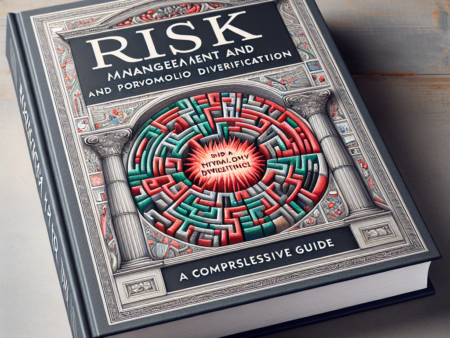Market Volatility: How to Navigate
Market volatility is an inevitable aspect of the financial landscape, often causing anxiety among investors and traders alike. Understanding how to navigate through volatile markets is crucial for preserving investments and capitalizing on potential opportunities. In this comprehensive guide, we will explore the causes of market volatility, its impact on various financial instruments, and effective strategies to manage and thrive in uncertain times.
Understanding Market Volatility
What is Market Volatility?
Market volatility refers to the rate at which the price of securities increases or decreases for a given set of returns. High volatility means that the price of the security can change dramatically over a short time period in either direction, while low volatility means that the price does not fluctuate dramatically, and tends to be more steady.
Causes of Market Volatility
Several factors can contribute to market volatility, including economic indicators, corporate earnings reports, geopolitical events, and changes in market sentiment. External events such as pandemics, political instability, or significant policy changes can also trigger sudden market movements.
Impact of Market Volatility on Investments
Short-term vs. Long-term Effects
In the short term, market volatility can lead to significant fluctuations in portfolio value, which may be unsettling for investors. However, for long-term investors, volatility can present buying opportunities to purchase undervalued assets and benefit from the market’s eventual recovery.
Sector-specific Impacts
Different sectors react uniquely to market volatility. For instance, technology and commodity sectors may experience higher volatility compared to utilities or consumer staples. Understanding sector-specific behaviors can aid in effective portfolio diversification.
Strategies to Navigate Market Volatility
Diversification
Diversifying your investment portfolio across various asset classes and sectors is a fundamental strategy to mitigate the risks associated with market volatility. By spreading investments, the poor performance of one asset can be offset by the better performance of another.
Asset Allocation
Proper asset allocation involves distributing investments among different types of assets, such as stocks, bonds, and cash equivalents, based on your risk tolerance and investment horizon. This approach helps balance risk and reward according to individual investment goals.
Hedging
Hedging is a risk management strategy used to offset potential losses in investments. By using instruments like options, futures, or inverse ETFs, investors can protect their portfolios against adverse market movements.
Staying Informed and Agile
Keeping abreast of market news, economic indicators, and global events allows investors to make informed decisions. Being agile and ready to adjust investment strategies in response to changing market conditions is crucial for managing volatility effectively.
Emotional Discipline
Maintaining emotional discipline is essential during periods of high volatility. Avoiding impulsive decisions based on fear or greed can prevent unnecessary losses and help in sticking to a well-thought-out investment plan.
Practical Examples and Actionable Insights
Case Study: Navigating the 2020 Market Volatility
The 2020 market volatility, triggered by the COVID-19 pandemic, presented both challenges and opportunities for investors. Those who maintained a diversified portfolio and took advantage of lower asset prices saw significant gains as the markets rebounded.
Implementing a Volatility-based Investment Strategy
Incorporating volatility indicators, such as the VIX index, into your investment strategy can help in timing market entries and exits more effectively. For instance, increasing cash holdings or shifting to less volatile assets during periods of high volatility can reduce portfolio risk.
Tools and Resources to Manage Volatility
Volatility Indicators
Utilizing volatility indicators like Bollinger Bands, Average True Range (ATR), and the VIX can provide insights into market conditions and help in making informed trading decisions.
Financial Advisors and Portfolio Managers
Engaging with financial advisors or portfolio managers can offer personalized strategies tailored to your financial goals and risk tolerance, assisting in navigating volatile markets effectively.
Educational Resources
Staying educated through financial news, webinars, and courses can enhance your understanding of market dynamics and equip you with the knowledge to manage investments during volatile periods.
Conclusion
Market volatility is a double-edged sword that can pose significant risks but also offer lucrative opportunities for well-prepared investors. By understanding the factors driving volatility, implementing strategic diversification and asset allocation, and maintaining emotional discipline, investors can navigate through turbulent markets with confidence. Leveraging the right tools and staying informed further enhances your ability to thrive amidst uncertainty, ultimately contributing to long-term financial success.
Frequently Asked Questions
- What is market volatility?
- Market volatility refers to the rate at which the price of securities increases or decreases over a period of time. High volatility means significant price fluctuations, while low volatility indicates more stable prices.
- How can I protect my investments during volatile markets?
- Protect your investments by diversifying your portfolio, maintaining a balanced asset allocation, using hedging strategies, and staying informed about market conditions. Additionally, maintaining emotional discipline helps in making rational investment decisions.
- What are some common indicators of market volatility?
- Common indicators include the VIX index, Bollinger Bands, and the Average True Range (ATR). These tools help investors gauge the level of market uncertainty and potential price fluctuations.
- Is market volatility always a negative thing?
- No, market volatility is not always negative. While it can increase risk, it also creates opportunities for investors to buy undervalued assets and realize significant gains when the market stabilizes.
- Should I sell my investments during high volatility?
- Not necessarily. Selling during high volatility can lock in losses and miss out on potential recoveries. It’s important to assess your investment strategy, risk tolerance, and long-term goals before making such decisions.
Disclaimer
The information provided in this article is for informational purposes only and should not be construed as financial or investment advice. It is always recommended to conduct thorough research and consult with a professional advisor before making any investment decisions.


















